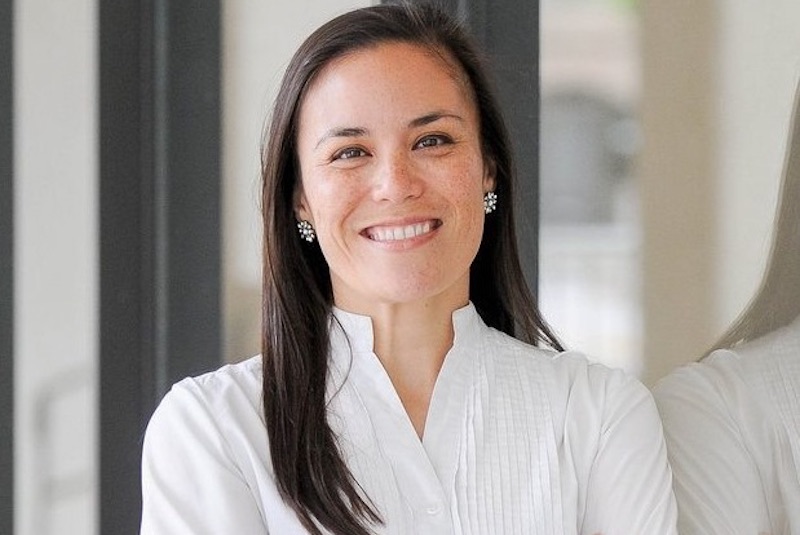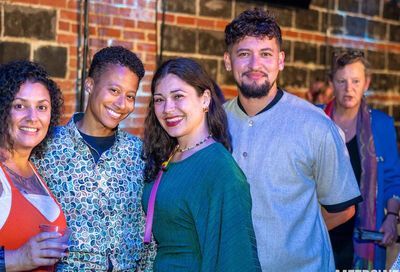The Alarming Negative Outlook of LGBTQ Youth
A recent Trevor Project survey finds that 1 in 3 LGBTQ youth believe they will not live past the age of 35.

If recent studies are to be believed, it’s time for advocates to sound the alarm when it comes to recognizing one of the warning signs that LGBTQ youth may be considering suicide.
A recent analysis of data collected from The Trevor Project’s 2023 U.S. National Survey, focusing on the mental health of LGBTQ individuals, finds that fewer than 3 out of 5 people aged 13 to 24 believe there’s a high chance they will reach or exceed the age of 35. Even more disturbingly, 1 out of 3 respondents characterized their chances of reaching age 35 — which is not even considered middle age — as low. Another 7 percent said they were unsure of their life expectancy.
That such a negative outlook on life would be adopted by a significant number of LGBTQ-identifying youth is disturbing, to say the least. But for The Trevor Project, an organization dedicated to combating suicide among LGBTQ youth, examining the data may offer insights on how to recognize warning signs and intervene before youth attempt self-harm.
The survey from which the data on life expectancy is drawn also asked the youth about their sense of purpose in life, focusing on six different aspects: whether respondents felt that their life has enough purpose; whether they find their life activities worthwhile; whether they believe the activities they engage in are important; valuing said activities; caring about said activities; and having many reasons to live.
According to the data, only 25% of more than 20,000 respondents, aged 13 to 24, from across the country, felt there was enough purpose in their lives, while nearly 1 in 3 believed that what they do feels important. Fewer than half of all respondents said they care about the things they do. One in three found their activities worthwhile, while a majority — 54% — valued their life activities. Only 44% reported that they have a lot of reasons to live.
It should be noted that while 30% of the respondents answered affirmatively to four to six of those queries about life purpose, more than 1 in 4 could not answer affirmatively in any of the six areas.
Dr. Steven Hobaica, a Honolulu-based licensed clinical psychologist and research scientist at the Trevor Project, told Metro Weekly that both expectations for life expectancy and whether an individual feels their life has a purpose appear to be strongly related to whether they experience suicidal ideation or symptoms of other mental health issues.
For example, among those LGBTQ young people who predicted a “low chance” that they would reach age 35, 82% reported higher rates of recent anxiety, compared to only 58% of those who predicted a higher chance of living that long. Similarly, while 77% of people who speculated a low chance of living until age 35 reported experiencing symptoms of depression, only 40% of youths who believed they’d reach age 35 reported feeling depressed.
Additionally, those with negative perceptions surrounding life expectancy were more likely to report higher rates of past-year self-harm, suicidal ideation, and suicide attempts compared to peers who embraced more positive views around life expectancy.

Feeling the sense of a life purpose was positively correlated to perceived life expectancy.
For example, 20% of LGBTQ youths who did not endorse having “a lot of reasons to live” reported a past-year suicide attempt, compared to only 5% who responded affirmatively to such prompts. Similarly, 16% of people who did not feel they had enough purpose in their lives attempted suicide in the past year, compared to just 5% of people who reported having “enough purpose” in their lives.
More specifically, 22% of individuals who did not endorse any of the six metrics on “life purpose” reported a suicide attempt in the past year, while only 3% of those who responded affirmatively to the six forms of life purpose reported attempting suicide.
“If we think about how all these variables are possibly related, a sense of life purpose and life expectancy are related,” Hobaica said. “And both of those are related to suicide [attempts] or other mental health concerns. So helping youth develop their life purpose, or improve their feelings about their life purpose, could be life-saving.”
Hobaica also said that, given those correlations, the idea of asking youth about their perceived life expectancy or life purpose could be a “very helpful tool” in predicting a possible future suicide attempt.
“If you were hesitant to ask about possible suicide or whether or not someone attempted suicide in the last year, you could also ask them about their perceived life expectancy, given how closely related it was to a suicide attempt in the past year,” he added.
Interestingly, there were clear distinctions in terms of life expectancy between youth aged 13 to 17 and those aged 18 to 24. While only 59% of the younger group predicted they’d reach or exceed age 35 in their lives, an overwhelming 73% of respondents aged 18-24 felt similarly.
When asked about the different responses between those age subgroups, Hobaica noted that there could be a “cohort effect,” in which people who have lived through the same kind of life experience may be uniquely shaped by that experience in a way that other groups aren’t.
“When we think about 13- to 17-year-olds, what they’ve been dealing with as a group, that could be different from what an 18- to 24-year-old might be dealing with,” he said.
As an example, he pointed to the COVID-19 pandemic, which was characterized by lockdowns, isolation through social distancing, and school closures, perhaps leading 13- to 17-year-olds to view the world or their own lives in a more negative light, and potentially exacerbating existing mental health issues.
“We also see that LGBTQ youth that are 13 to 17 regularly report worse mental health in comparison to their older peers, often tied to experiences in school or at home that might be negative, or [tied to] feelings of confusion navigating an identity that might be stressful for them,” Hobaica said. “So that time when someone is 13 to 17 can be a crucial developmental period that can be really difficult for queer youth.”
Similarly, the analysis of The Trevor Project’s survey found that multisexual young people — those identifying as bisexual, pansexual, or queer — were more likely than their gay or lesbian peers to predict they wouldn’t reach or live past the age of 35.
Additionally, just over half, or 53%, of transgender and nonbinary individuals said they believed they’d live to age 35, compared to 63% of gender-questioning individuals, and 79% of cisgender individuals.
In terms of race, LGBTQ youth of color were less positive, compared to their white peers, with respect to their life expectancy. While only 59% of youth of color expect to reach age 35, nearly two-thirds of white youth do.
Hobaica said that the disparities between how various subgroups responded to the survey prompts align with similar research showing that when youth hold intersectional or multiple marginalized identities, they report more stressful life experiences and worse health outcomes.
The Trevor Project’s research is sometimes criticized for its definition of “youth.” It frequently incorporates responses from 18- to 24-year-old legally-recognized adults in its data. But Hobaica says that the research scientists at The Trevor Project always try to look at data objectively and distinguish between age cohorts in cases where there are differences between 13- to 17-year-olds and youths aged 18 and over.
“The definition of ‘youth’ and ‘young person,’ can differ based on organization,” he said. “So including a wide age range is us trying to make sure that we can really speak to not only one definition of youth, but multiple definitions of a “young person,” covering a lot more developmental stages by including those aged 13 to 24.
“There may also be significant differences between those groups, and we can communicate about those groups separately as well as together, when it’s appropriate to do so. But no, we don’t group them together for any agenda,” Hobaica continued. “It’s rather just to make sure that we have as much data as possible, about as many people as possible.”
Recent right-wing studies claim that allowing LGBTQ people to undergo conversion therapy actually decreases suicidality. Hobaica pushes back against the idea that conversion therapy is effective, or that it might assist youth with more pessimistic views of their lives — like those surveyed by The Trevor Project — in becoming happier.
“There is absolutely no data to show that conversion therapy works in the way that they say that it works, or that it can significantly alter one’s sexual orientation or gender identity,” he said. “It has been found to not be effective time and time again.
“Also, regarding the assertion that ‘LGBTQ people are unhappy, so let’s make them not be LGBTQ anymore,’ that argument is kind of a misunderstanding of the scientific literature on the topic,” he added. “LGBTQ youth are not born sick. They’re not born mentally ill. They also don’t become sick or mentally ill because they identify as LGBTQ.
“When you look at conversion therapy consistently, conversion therapy experiences are a big contributor to those mental health concerns that we see in LGBTQ youth. When LGBTQ youth are put into conversion therapy, they come out more likely to be depressed, anxious, engaging in self-harm, attempting suicide.”
Data from The Trevor Project’s U.S. National Survey appears to back up this claim. While only 15% of LGBTQ youth surveyed reported being either threatened with, or subjected to, conversion therapy, those who were more likely to attempt suicide than their peers who were not.
According to the survey, only 11% of the larger group who were not threatened with or subjected to conversion therapy had attempted suicide over the past year. By comparison, 28% of those threatened with conversion therapy, and 28% of those subjected to it, reported a past-year suicide attempt.
Hobaica adds that other factors beyond conversion therapy may lead to greater feelings of isolation, depression, or anxiety, which can lead to negative perceptions of one’s life or a feeling of lack of life purpose. That, in turn, can exacerbate existing mental health difficulties and feelings of suicidal ideation.
“Experiences that are not affirming to [LGBTQ youths’] identity, whether that’s bullying or discrimination or not being accepted by their parents, or having a bad health care experience, are better explanatory variables for the mental health problems that we see in LGBTQ youth,” he said. “When LGBTQ youth experience affirming, inclusive, positive interactions, we see that their mental health is a lot better.”
For more information about The Trevor Project, visit www.thetrevorproject.org.
If you are an LGBTQ youth in crisis, visit The Trevor Project’s free crisis services at www.thetrevorproject.org/crisis-services.
Individuals who are experiencing suicidal thoughts are encouraged to call the National Suicide and Crisis Lifeline by dialing 988.
Support Metro Weekly’s Journalism
These are challenging times for news organizations. And yet it’s crucial we stay active and provide vital resources and information to both our local readers and the world. So won’t you please take a moment and consider supporting Metro Weekly with a membership? For as little as $5 a month, you can help ensure Metro Weekly magazine and MetroWeekly.com remain free, viable resources as we provide the best, most diverse, culturally-resonant LGBTQ coverage in both the D.C. region and around the world. Memberships come with exclusive perks and discounts, your own personal digital delivery of each week’s magazine (and an archive), access to our Member's Lounge when it launches this fall, and exclusive members-only items like Metro Weekly Membership Mugs and Tote Bags! Check out all our membership levels here and please join us today!































You must be logged in to post a comment.